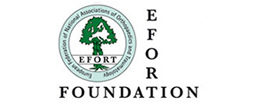In elderly patients, a higher body weight can have definite advantages. A Swedish study presented at the EFORT Congress in Istanbul found that elderly people with a higher body weight have a lower risk of dying and of developing pressure ulcers following a hip fracture.
Istanbul, 5 June 2013 – Obesity is a risk factor for a number of diseases. However, in old age, having too little body weight can also become a major problem. Following hip fractures, elderly people with a higher body mass index have a lower mortality risk according to a new Swedish study presented at the 14th Congress of the European Federation of National Associations of Orthopaedics and Traumatology (EFORT) in Istanbul. About 7,500 experts are discussing current developments in their field at this congress. Lead author in the study Dr Lena Flodin (Karolinska Institut, Stockholm, Sweden) explained: “Swedish patients with a hip fracture are 83 years old on average. The complication rate and mortality are extremely high following these injuries, indicating how frail the patients are.”
For the study, she observed 843 patients over 65 with a hip fracture for the course of one year following the fracture. The body mass index (BMI) was correlated in this group with the probability of a clinical event. Dr Flodin: “The primary goal of the study was to evaluate the influence of the body mass index as a predictor of mortality within one year in a relatively healthy group. The patients had lived in their own households prior to their hip fracture and were not seriously impaired cognitively.” The study showed that a low BMI is a definite predictor of death within one year. In addition, a low BMI was also associated with a heightened risk of pressure ulcers and allowed conclusions to be drawn about the ability of the patients to continue living an independent life. Patients with a higher BMI also had significantly better chances of returning to independent living.
Malnutrition increases mortality after hip fracture
Dr Flodin: “The purpose of the body mass index is to predict the effects that body fat has on morbidity and mortality in adults. The health authorities in Sweden stipulate a BMI of 20 as the lower limit for people aged 65 to 70 and one of 22 as the lower limit for people over 70. Below this score we assume underweight and possibly malnourishment.” An excessively high BMI is unfavourable, as is an excessively low BMI. However, the BMI also has a number of shortcomings. A high value may correlate well with adiposity, but key factors such as age, gender and muscle mass are left out of the picture. That is why there is no consensus regarding limits for elderly people.
Dr Flodin: “One assumes that mortality in geriatric patients with a low body mass index is higher than in those with a normal BMI. That is a frequent problem. Earlier studies from Sweden showed that the incidence of malnutrition is between 14 and 41% amongst elderly people living alone. In one study, 25% of the patients with a hip fracture were found to have a problematically low BMI. There are also indications of a postoperative reduction in the BMI and a loss of muscle and bone mass in the first year following a hip fracture. That is only logical,” the expert explained. “After all, abstinence from food prior to surgery and the waiting time mean reduced calorie intake and can cause a reduction particularly in muscle mass in elderly patients. Following these latest results, we will need further studies to understand more fully the correlation between the BMI and nutritional state in elderly people.”
About EFORT
The European Federation of National Associations of Orthopaedics and Traumatology (EFORT) is the umbrella organisation linking Europe´s national orthopaedic societies. EFORT was founded in 1991 in the Italian Marentino. Today it has 42 national member societies from 43 member countries and six associate scientific members.
EFORT is a non-profit organisation. The participating societies aim at promoting the exchange of scientific knowledge and experience in the prevention and treatment of diseases and injuries of the musculoskeletal system. EFORT organises European congresses, seminars, courses, forums and conferences. It also initiates and supports basic and clinical research.
Source: EFORT Abstract 2560: Body Mass Index as a predictor of one-year mortality: a prospective study of elderly patients with hip fracture.


